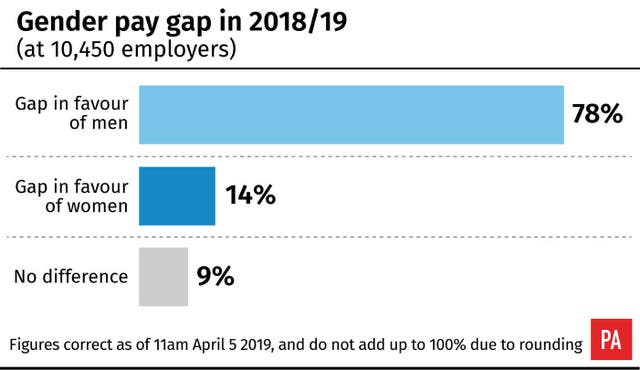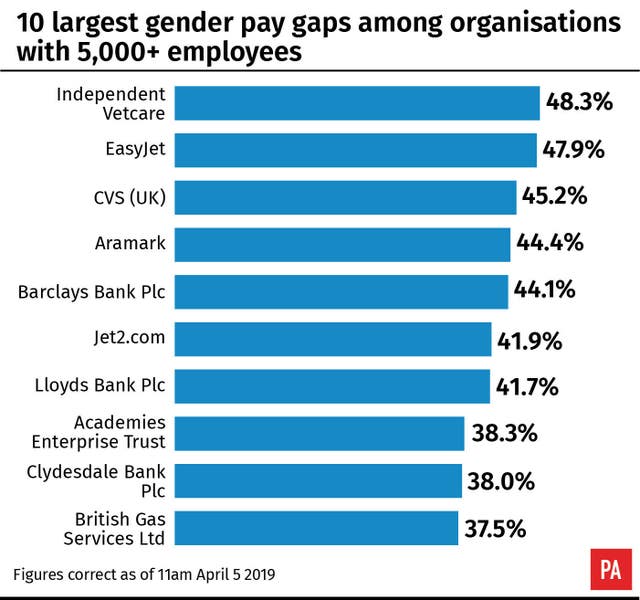
Most organisations meeting a deadline for reporting gender pay figures have showed a gap in favour of men.
Of the 10,450 organisations who had reported their figures by Friday, 78% (8,128) showed a gender pay gap in favour of men while 14% (1,427) showed a gap in favour of women, with the rest reporting no difference.
Some 9,339 employers have so far reported comparable figures for both 2017/18 and 2018/19, of which 4,140 (44%) showed a gap increasing in favour of men, and 742 (8%) showed no change.
High-profile organisations that reported some of the largest pay gaps for 2018/19 include the airline Ryanair (64.4%), the health provider Intrahealth (57.4%) and Sheffield United football club (48.2%).

Employers whose gender pay gap increased in size year-on-year include Huddersfield Town football club (up from 20.9% to 39.6%), the Department for Digital, Culture, Media and Sport (up from 8.2% to 22.9%) and Dyfed-Powys Police (from 8.0% to 22.5%).
The Government Equalities Office estimated that around half of private sector employers have put in place an action plan to tackle their pay gap.
Of 8,424 private firms reporting their data, 3,387 saw their pay gap worsen, 3,736 saw it improve and 645 reported no change, said the Government.
All employers with more than 250 staff had until midnight last night to report gender pay details or face legal action, including fines.
The Equalities and Human Rights Commission said it will now be contacting firms which had not supplied information.
The Chartered Institute of Personnel and Development (CIPD) said there were “marked differences” between regions, with the median gender gap lowest in Scotland at 5.7% and highest in the South East and South West – both 11%.
Chief executive Peter Cheese said: “It’s disappointing that many employers are still not providing a narrative or action plan.
“Organisations that simply provide their numbers are failing to meet the increasing appetite and expectation for transparency amongst all stakeholders, including employees, investors, and regulators.”

TUC general secretary Frances O’Grady said: “Big employers clearly aren’t doing enough to tackle the root causes of pay inequality and working women are paying the price.
“Government needs to crank up the pressure. Companies shouldn’t just be made to publish their gender pay gaps, they should be legally required to explain how they’ll close them, and bosses who flout the law should be fined.”
Carolyn Fairbairn, director general of the CBI, said businesses cannot close the gap by themselves, adding: “Many of the causes lie outside the workplace including a lack of affordable, high-quality childcare and better careers advice.
“Companies and Government working together remains the best way to deliver the long-term, lasting change that’s needed.”
Minister for Women and Equalities, Penny Mordaunt, said: “Actions to tackle the gender pay gap are good for business. That’s why we have produced support to help employers close their gaps.
“We recognise that in order to close the gap entirely we still need a much wider cultural change, that is why we have introduced a range of initiatives to tackle the drivers of the gap, including shared parental leave and spending around £6 billion on childcare support.”

Enjoy the convenience of having The Sunday Post delivered as a digital ePaper straight to your smartphone, tablet or computer.
Subscribe for only £5.49 a month and enjoy all the benefits of the printed paper as a digital replica.
Subscribe